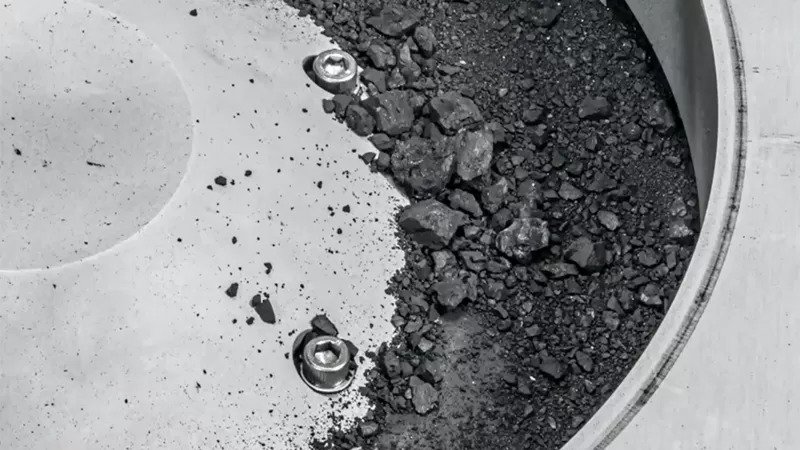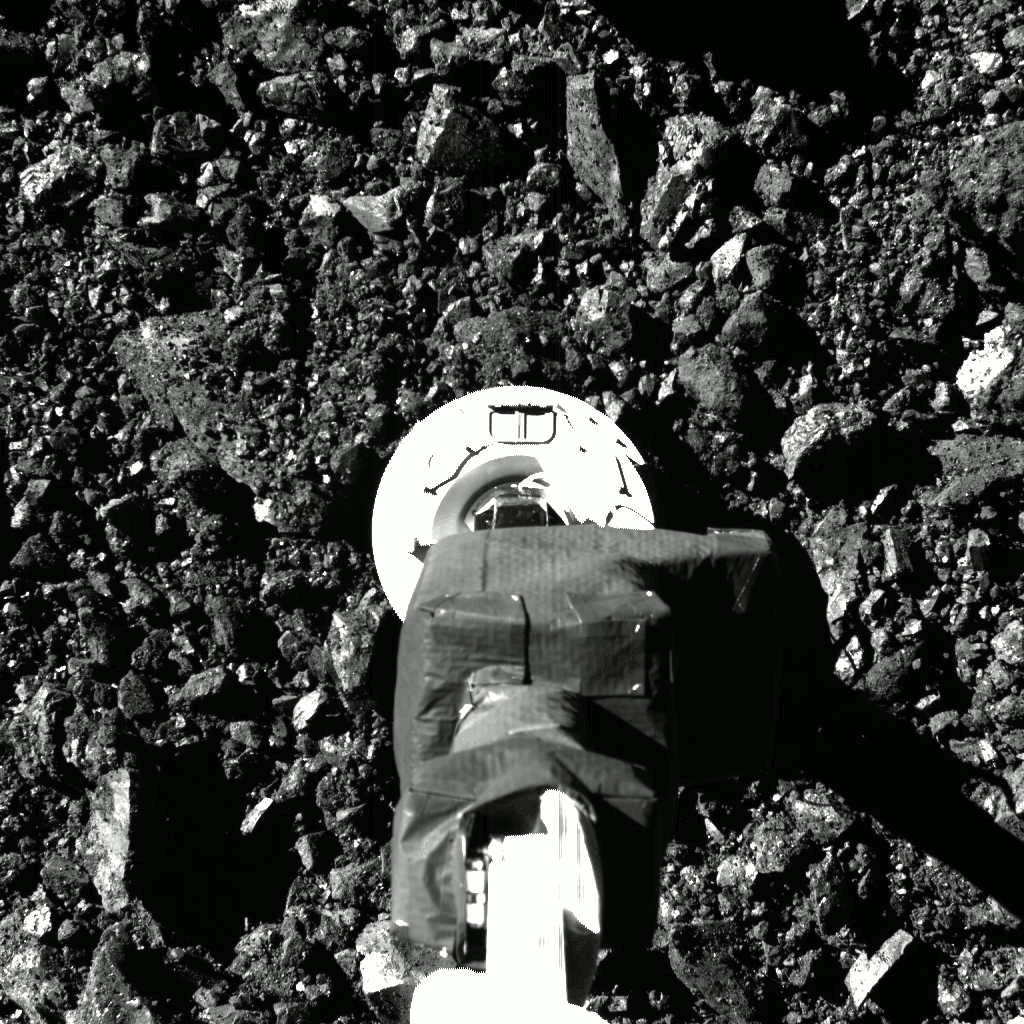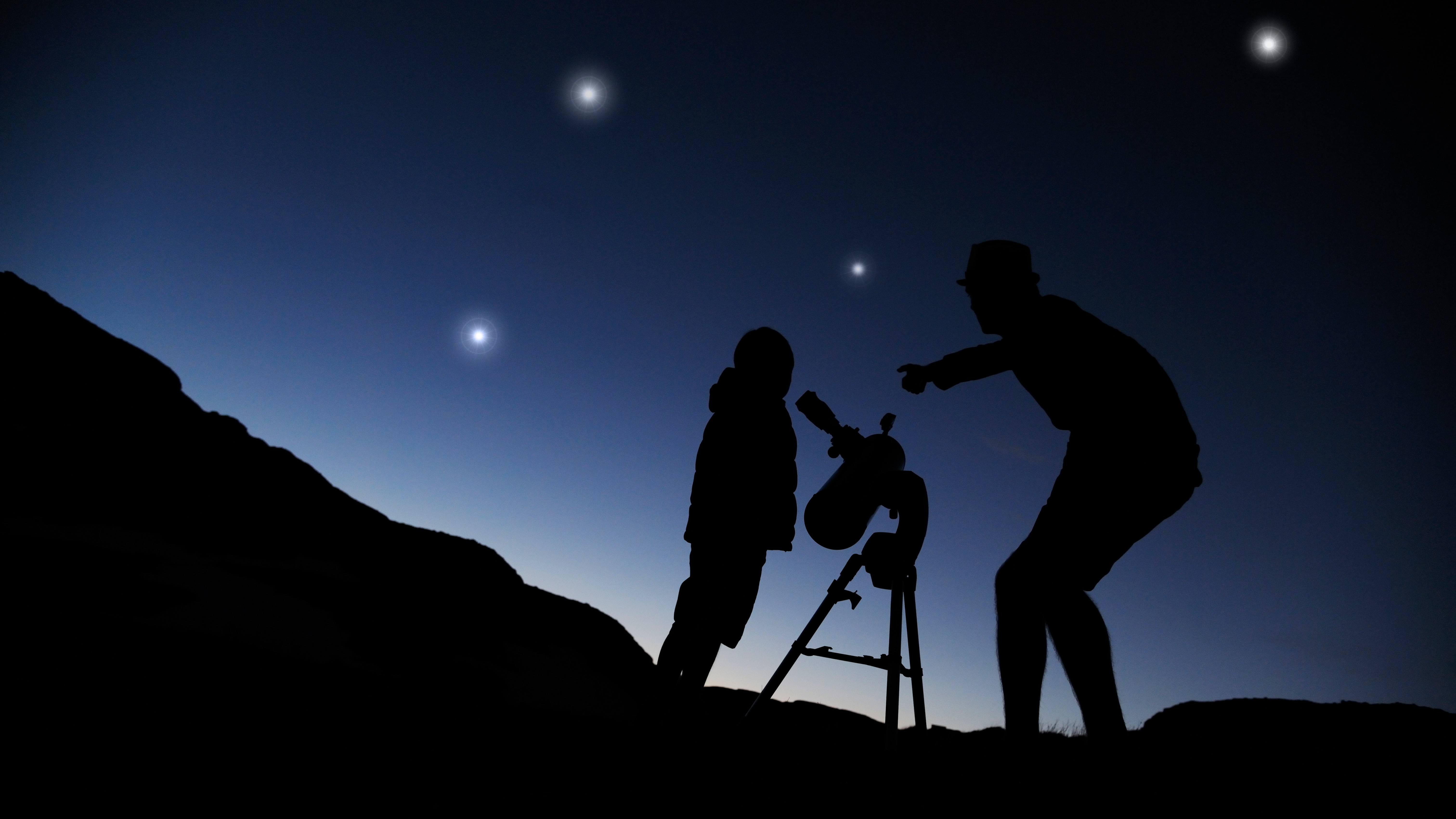NASA finally reveals 1st sample from potentially-hazardous asteroid Bennu — and it may contain the seeds of life
After a years-long mission to collect and retrieve rock samples from the potentially hazardous asteroid Bennu, NASA has revealed its initial findings — and perhaps a clue to life’s origins on Earth.

NASA has revealed the very first peek at the sample collected by OSIRIS-REx — the space agency's first successful mission to collect a rock chunk from a distant asteroid.
The sample — between 3.5 to 8.8 ounces (100 to 250 grams) of rocky space rubble collected from the asteroid Bennu's surface — contains water and carbon, scientists announced at a news conference at NASA's Johnson Space Center in Houston on Wednesday (Oct. 11).
NASA scientists unveiled the sample two weeks after it hurtled back to Earth at speeds of up to 27,000 mph (43,000 km/h) on Sept. 24. After a seven-year, 4 billion-mile (6.4 million kilometers) roundtrip, the capsule deployed its parachute and safely landed in the Utah desert before being transported to Johnson Space Center, where scientists have begun analyzing its contents for signs of life beyond our planet.
Bennu is a potentially hazardous asteroid that has a 1-in-2,700 chance of striking Earth in the year 2182 — the highest odds of any known space object. But the scientists are more interested in what's trapped inside the space rock: the possible extraterrestrial precursors of life on Earth.
"This is the biggest carbon-rich asteroid sample ever returned to Earth," NASA administrator Bill Nelson said at the news conference. "Carbon and water molecules are exactly the elements we wanted to find. They're crucial elements in the formation of our own planet, and they're going to help us determine the origins of elements that could have led to life."

Earth's water is older than the planet itself and was probably brought here by asteroid and comet impacts. But water wasn't the only material asteroids brought to Earth: The building blocks of life likely hitched a ride on a space rock, too. Bennu is a B-type asteroid, which means it contains high amounts of carbon and, potentially, many of the primordial molecules present when life emerged on Earth.
Get the world’s most fascinating discoveries delivered straight to your inbox.
Some of these building blocks, including uracil, one of the nucleobases for RNA, were recently found on the asteroid Ryugu by the Japan Aerospace Exploration Agency's Hayabusa2 spacecraft, which returned to Earth with its rock sample in 2020. OSIRIS-REx mission scientists are hoping to find other potential precursors for Earth's biology inside the Bennu sample.
"As we peer into the ancient secrets preserved within the dust and rocks of asteroid Bennu, we are unlocking a time capsule that offers us profound insights into the origins of our solar system," Dante Lauretta, OSIRIS-REx's principal investigator, said at the news conference.
"The bounty of carbon-rich material and the abundant presence of water-bearing clay minerals are just the tip of the cosmic iceberg," he added. "These discoveries, made possible through years of dedicated collaboration and cutting-edge science, propel us on a journey to understand not only our celestial neighborhood but also the potential for life's beginnings. With each revelation from Bennu, we draw closer to unraveling the mysteries of our cosmic heritage."
The sample was collected after nearly two years of fraught searching for a landing site on Bennu's craggy surface. Upon contact with the asteroid, OSIRIS-REx fired a burst of nitrogen from its Touch-and-Go Sample-Acquisition Mechanism — not only to stick the landing but to prevent the craft from sinking through the asteroid.
The blast sent rocks and dust careening around the craft, and some of that rocky debris landed in a canister aboard OSIRIS-REx. A follow-up blast of OSIRIS-REx's thrusters later lifted it from Bennu, and the spacecraft completed a number of flyovers before leaving the asteroid for Earth in May 2021.

Ben Turner is a U.K. based writer and editor at Live Science. He covers physics and astronomy, tech and climate change. He graduated from University College London with a degree in particle physics before training as a journalist. When he's not writing, Ben enjoys reading literature, playing the guitar and embarrassing himself with chess.


